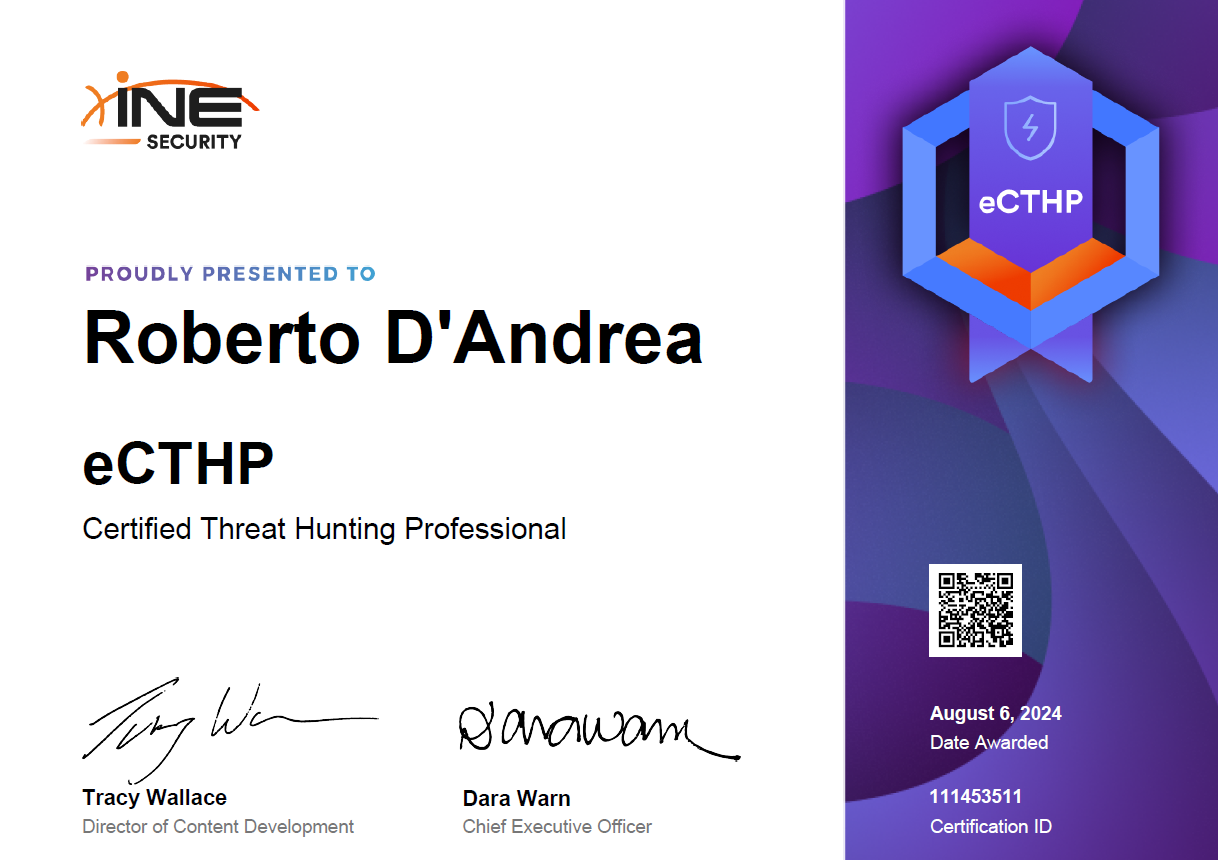The Certified Threat Hunting Professional v2 (eCTHPv2) by INE is a certification designed for security professionals focused on threat hunting.
This certification is ideal for security analysts and threat hunters who wish to learn in-depth techniques for identifying malicious activities across network and endpoint environments. Priced at $399, the certification includes a practical exam and requires a final report, to be completed within two days post-exam. This guide includes notes and an example of the exam I completed.
This certification is broken down into three main areas:
Course Structure and Certification Details
- Introduction to Threat Hunting:
- This section introduces core threat hunting concepts, life cycles of threats, and detection methodologies. Key topics include identifying Indicators of Compromise (IoC) and building threat-hunting hypotheses.
- A crucial part is understanding threat behaviors and utilizing frameworks like MITRE ATT&CK to create a structured approach.
- Hunting the Network & Network Analysis:
- This part focuses on network traffic analysis and techniques for spotting suspicious patterns. Practical insights are given into monitoring network data using Splunk and understanding packet analysis.
- The module covers spotting lateral movement and data exfiltration signs.
- Hunting the Endpoint & Endpoint Analysis:
- Here, emphasis is on endpoint analysis, covering tools like Volatility for memory analysis and ELK (Elastic) for log analysis, focusing on detecting malware indicators and suspicious activity on endpoints.
n this section, I’ve included some of my notes to help guide others studying for the eCTHPv2 certification. These notes summarize key takeaways from each module, covering essential techniques, tools, and strategies for threat hunting within networks and endpoints.
- eCTHPv2 Certification Notes → eCTHP Notes
Exam Details
The eCTHPv2 exam consists of three hands-on labs:
- Splunk: For log monitoring and network traffic analysis.
- Volatility: For forensics and memory analysis.
- ELK (Elastic): For system log management and analysis.
After completing these labs, you have two days to complete the exam and an additional two days to submit the final report, which must detail your findings and conclusions from the hunting activities.
Tips for Success
Since you’re already familiar with Splunk and ELK, here are some focused tips:
- Review the MITRE ATT&CK Framework: Get well-acquainted with common attack techniques. This framework will support you in your report, especially when describing threat-hunting processes.
- Maximize Tool Knowledge: Even if you know Splunk and ELK well, delve deeper into filtering techniques, regex for complex queries, and setting up customized dashboards and alerts.
- Thorough Documentation: During the labs, take meticulous notes. The final report should detail not just results but also your methodologies to demonstrate a structured approach.
- Time Management: Plan each lab’s activities and reserve time for report review to meet the certification’s strict deadlines.
- Practice with Real Scenarios: Aside from course materials, practice with realistic case studies to solidify your knowledge, especially in network and endpoint analysis.

Conclusion
INE’s eCTHPv2 provides significant hands-on experience in threat hunting, emphasizing proactive response to network and endpoint threats. By mastering tools like Splunk, Volatility, and ELK, this certification enhances your ability to detect and analyze anomalies in an enterprise setting.
The hands-on labs and structured threat-hunting techniques make it a comprehensive choice for anyone serious about advancing their skills in cybersecurity and threat detection.